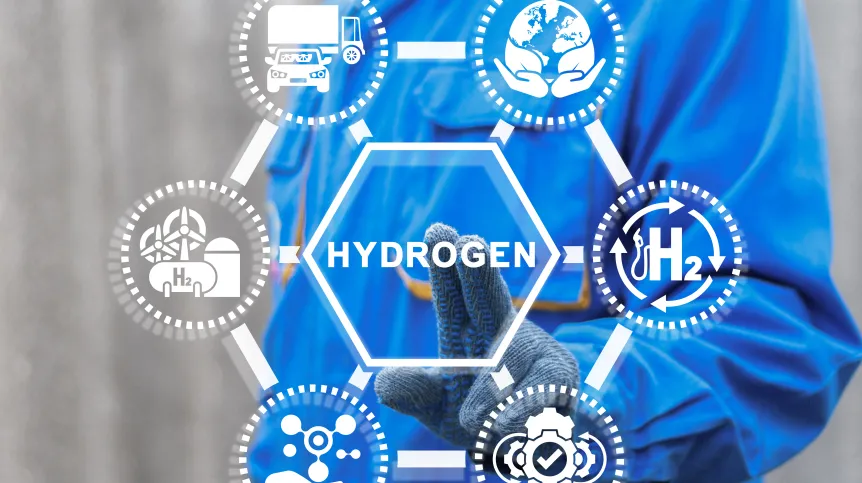
Scientists from the Military University of Technology propose a simple solution to the difficult problem of activation of FeTi hydrogen storage alloys: 'shake and stir' the powder particles in a ball mill.
Material engineers managed to get rid of the problematic passive oxide layer, which forms on the surface of the hydrogen storage alloys. This layer, in the assessment of the scientific world, hinders the first absorption of hydrogen. The team from the Faculty of Advanced Technologies and Chemistry of the Military University of Technology removed it by stirring the powder intensively under hydrogen pressure. In a ball mill, the particles collided and rubbed against each other. This resulted in the activation of the FeTi intermetallic phase and allowed it to be fully hydrogenated. As a result - the fresh surface was exposed to hydrogen.
This is another step towards efficient hydrogen storage, also in vehicles, we read in a release on the university website. To explain the meaning of their discovery, the authors of the publication outlined its historical context.
PROBLEMATIC FIRST HYDROGEN ABSORPTION
They explained that the scientific world has long been looking for methods of effective hydrogen storage. Currently, the car industry uses high pressure cylinders (350 and 700 bar) on a large scale. However, drivers and passengers are subconsciously afraid of devices that contain high pressure gas.
Materials that absorb hydrogen in the solid phase, been known since the mid-20th century, were expected to solve the problem. They allow, at a pressure of several bar, to accumulate larger amounts of this gas in the same volume as the cylinders.
However, they have a serious disadvantage. These materials are not sufficiently capacious in relation to their mass and the entire storage system, and they absorb and release hydrogen too slowly. In addition, most of them require time-consuming and energy-intensive activation. In other words, the first hydrogen absorption cannot be carried out without many treatments, including heating in a vacuum and in an atmosphere of hydrogen at a temperature of 400 degrees Celsius.
The passive oxide layer was considered to be the main culprit. It is produced on the surface of hydrogen-absorbing alloys and causes problems with the first absorption. That is why researchers in many centres try to use alloy additives or otherwise modify the alloys to avoid performing complex technological activation procedures.
According to the team of researchers, Dr. Abhishek Kumar Patel, Dr. Dariusz Siemiaszko, Dr. Julita Dworecka-Wójcik and Dr. Marek Polański: “Sometimes it brings results, but always at the cost of reduced maximum alloy capacity and usually increased price.
SIMPLE REMEDY FOR OXIDE LAYER PROBLEMS
'If it is true that a passive layer on the surface makes the first hydrogen absorption difficult, then getting rid of this layer through mechanical abrasion in the atmosphere of hydrogen will expose fresh surfaces to effects and, as a result, a reaction.”
They achieved this by intensively mixing the powder itself under hydrogen pressure in a ball mill. Rubbing of particles as a result of their collisions was enough and caused the activation of the FeTi intermetallic phase in accordance with the assumptions, allowing it to be fully hydrogenated.
They said: “In this simple way, after several dozen years, the problem of activation of hydrogen-absorbing alloys has been solved. We could say that we only had to shake and stir.
“Just shake or stir. About the simplest solution for the activation and hydrogenation of an FeTi hydrogen storage alloy.”
Published in the International Journal of Hydrogen Energy, the research was conducted and will be continued as part of the OPUS projects of the Polish National Science Centre.
PAP - Science in Poland, Karolina Duszczyk
kap/
tr. RL













